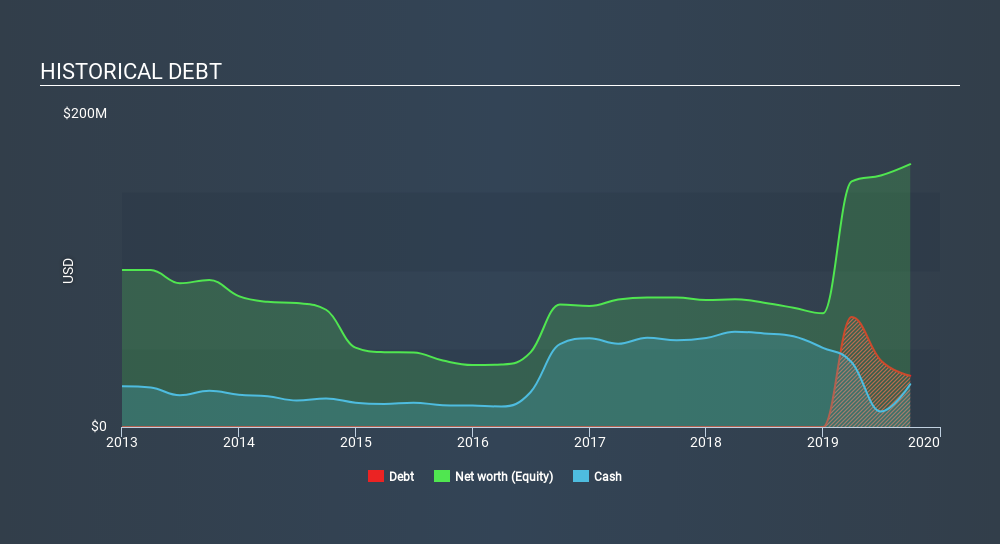
Warren Buffett famously said, 'Volatility is far from synonymous with risk.' So it seems the smart money knows that debt - which is usually involved in bankruptcies - is a very important factor, when you assess how risky a company is. We note that Great Panther Mining Limited (TSE:GPR) does have debt on its balance sheet. But the more important question is: how much risk is that debt creating?
When Is Debt A Problem?
Debt and other liabilities become risky for a business when it cannot easily fulfill those obligations, either with free cash flow or by raising capital at an attractive price. In the worst case scenario, a company can go bankrupt if it cannot pay its creditors. However, a more usual (but still expensive) situation is where a company must dilute shareholders at a cheap share price simply to get debt under control. Of course, debt can be an important tool in businesses, particularly capital heavy businesses. When we think about a company's use of debt, we first look at cash and debt together.
Check out our latest analysis for Great Panther Mining
How Much Debt Does Great Panther Mining Carry?
As you can see below, at the end of September 2019, Great Panther Mining had US$32.8m of debt, up from none a year ago. Click the image for more detail. On the flip side, it has US$27.3m in cash leading to net debt of about US$5.51m.

How Strong Is Great Panther Mining's Balance Sheet?
The latest balance sheet data shows that Great Panther Mining had liabilities of US$84.0m due within a year, and liabilities of US$55.2m falling due after that. Offsetting these obligations, it had cash of US$27.3m as well as receivables valued at US$16.4m due within 12 months. So its liabilities total US$95.6m more than the combination of its cash and short-term receivables.
This is a mountain of leverage relative to its market capitalization of US$144.7m. Should its lenders demand that it shore up the balance sheet, shareholders would likely face severe dilution. When analysing debt levels, the balance sheet is the obvious place to start. But ultimately, every company can contain risks that exist outside of the balance sheet. For example, we've discovered 2 warning signs for Great Panther Mining which any shareholder or potential investor should be aware of.
Over 12 months, Great Panther Mining reported revenue of US$147m, which is a gain of 132%, although it did not report any earnings before interest and tax. So its pretty obvious shareholders are hoping for more growth!
Caveat Emptor
While we can certainly savour Great Panther Mining's tasty revenue growth, its negative earnings before interest and tax (EBIT) leaves a bitter aftertaste. To be specific the EBIT loss came in at US$11m. When we look at that and recall the liabilities on its balance sheet, relative to cash, it seems unwise to us for the company to have any debt. So we think its balance sheet is a little strained, though not beyond repair. Another cause for caution is that is bled US$17m in negative free cash flow over the last twelve months. So suffice it to say we consider the stock very risky. For riskier companies like Great Panther Mining I always like to keep an eye on whether insiders are buying or selling. So click here if you want to find out for yourself.
Of course, if you're the type of investor who prefers buying stocks without the burden of debt, then don't hesitate to discover our exclusive list of net cash growth stocks, today.
If you spot an error that warrants correction, please contact the editor at editorial-team@simplywallst.com. This article by Simply Wall St is general in nature. It does not constitute a recommendation to buy or sell any stock, and does not take account of your objectives, or your financial situation. Simply Wall St has no position in the stocks mentioned.
We aim to bring you long-term focused research analysis driven by fundamental data. Note that our analysis may not factor in the latest price-sensitive company announcements or qualitative material. Thank you for reading.
About TSX:GPR
Great Panther Mining
Operates as a precious metals mining and exploration company.
Slightly overvalued with worrying balance sheet.
Market Insights
Community Narratives





